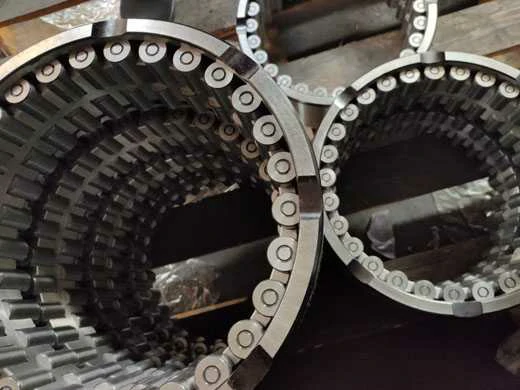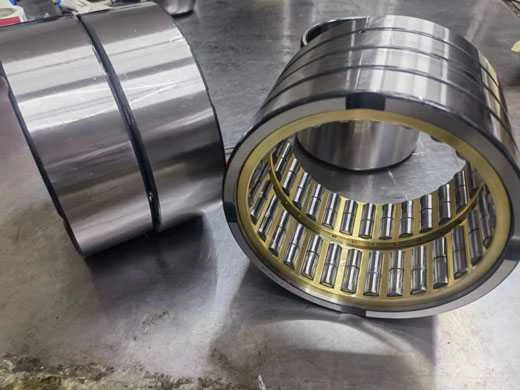Exploring the Different Types of Roller Bearings
Roller bearings are critical components in various types of machinery and equipment, allowing for smooth and efficient rotation of moving parts. They come in a wide range of designs and configurations, each suited to specific applications and operating conditions. In this article, we will explore the different types of roller bearings commonly used in industrial and commercial settings, examining their unique features, advantages, and applications.
Cylindrical Roller Bearings
Cylindrical roller bearings are characterized by their high radial load capacity and ability to accommodate high speeds. These bearings feature cylindrical rollers that are in contact with the raceway, providing excellent rigidity and support for heavy radial loads. They are commonly used in applications such as electric motors, machine tools, and gearboxes. The design of cylindrical roller bearings allows for easy installation and maintenance, making them a popular choice in various industries.
One significant advantage of cylindrical roller bearings is their ability to handle both radial and axial loads, making them suitable for applications where combined loads are present. Additionally, various cage designs and material options are available to optimize performance and reduce friction, contributing to enhanced efficiency and longevity.

Spherical Roller Bearings
Spherical roller bearings are designed to accommodate high radial loads and moderate axial loads in both directions. Their unique spherical outer ring raceway enables these bearings to compensate for shaft misalignment and deflection, making them ideal for applications subject to shaft deflections or misalignments. This characteristic allows for smoother operation and reduced vibration, resulting in extended machinery service life.
These bearings are commonly found in heavy-duty applications such as mining, construction equipment, and industrial machinery where heavy loads and harsh operating conditions are prevalent. Spherical roller bearings are available with various internal designs and cage options to suit specific application requirements, providing flexibility and reliable performance in diverse environments.
Tapered Roller Bearings
Tapered roller bearings are designed to handle both radial and axial loads, featuring a tapered design that allows the bearing to accommodate combined loads. This type of bearing is commonly used in automotive applications, where it provides support for vehicle wheel hubs, transmissions, and differentials. Tapered roller bearings are also widely used in heavy machinery, such as agricultural and construction equipment.
The tapered design of these bearings enables them to support high radial and axial loads while maintaining accurate rolling contact, leading to improved efficiency and reduced friction. Additionally, tapered roller bearings are available in single-row, double-row, and four-row configurations, offering versatility and adaptability for a wide range of applications and industries.

Needle Roller Bearings
Needle roller bearings are characterized by their compact and lightweight design, making them suitable for applications with limited space and weight restrictions. These bearings feature long, thin rollers that provide high load-carrying capacity and efficient operation in constrained spaces. Needle roller bearings are commonly used in automotive transmissions, aerospace applications, and power tools, where compactness and high load capacity are essential.
One of the key advantages of needle roller bearings is their ability to handle high radial loads while occupying minimal radial space. This makes them an ideal choice for applications where space is limited, but reliable performance is crucial. Furthermore, needle roller bearings are available with or without inner rings, allowing for greater design flexibility and optimization for specific application requirements.
Thrust Roller Bearings
Thrust roller bearings are designed to accommodate high axial loads and moderate radial loads, providing support for applications with heavy axial loads, such as crane hooks, vertical shafts, and large gearbox assemblies. These bearings consist of small-diameter cylindrical or spherical rollers arranged in a cage, enabling them to handle high thrust loads while maintaining low friction and precise alignment.
Thrust roller bearings are available in various configurations, including cylindrical, spherical, and tapered designs, allowing for optimal performance in different axial load applications. Their ability to withstand high thrust loads and shock loads makes them essential components in heavy-duty machinery and equipment, where reliable load support and operational stability are paramount.
Roller bearings are essential components in a wide range of machinery and equipment, playing a crucial role in ensuring smooth and efficient operation. Understanding the different types of roller bearings and their unique characteristics is vital for selecting the most suitable bearing for specific applications and operating conditions. By considering factors such as load capacity, speed, misalignment tolerance, and space constraints, engineers and designers can make informed decisions when specifying roller bearings, ultimately improving the performance and longevity of the machinery in which they are employed.
With advancements in material technology and bearing design, the capabilities and versatility of roller bearings continue to evolve, providing enhanced performance and reliability in diverse industrial sectors. Whether in automotive, aerospace, mining, or manufacturing, roller bearings contribute to the seamless operation of machinery and equipment, driving productivity and innovation across various industries.
.webp)